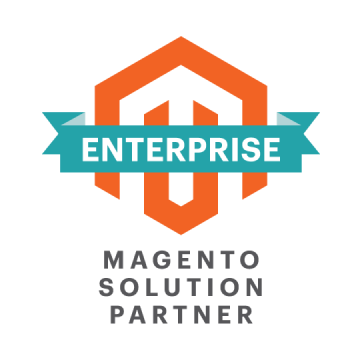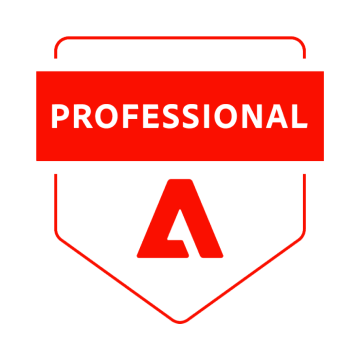Life Sciences Software Development
We design, build, and support software that keeps R&D, clinical, and manufacturing moving — connecting instruments and LIMS, MES, QMS, and ERP so data flows without rework and every step is traceable. For life sciences organizations, that means faster tech transfer, fewer deviations, and audit-ready records by default.

Our Offerings
LIMS & ELN Implementation
We deploy and integrate LIMS and ELN so samples, experiments, and results move cleanly from request to report. Typical scope includes master data setup, role-based permissions, instrument interfaces, barcode flows, and report templates. We map SOPs to system workflows and configure audit trails, e-signatures, and retention rules aligned to 21 CFR Part 11 and Annex 11. Handover includes admin playbooks and promote-to-prod procedures so your team can operate day to day without vendor tickets.
Clinical Data Platforms & EDC
We build study data pipelines that cover EDC setup, ePRO/eCOA capture, randomization, and data reconciliation with labs and imaging. Our work products include CRFs, edit checks, medical coding integrations, SDTM conversions, and near-real-time dashboards for site performance. We set up automated data quality gates and query workflows so cleaning cycles are shorter and lock dates are predictable.
Quality Systems (QMS, CAPA, Deviations)
We implement QMS modules for document control, training, deviations, CAPA, and change control, then connect them to your manufacturing and R&D systems. The result is one record from incident to effectiveness check with clear ownership and timestamps. We configure risk scoring, due dates, and escalation paths so managers can spot bottlenecks early and auditors can trace decisions in minutes.
Manufacturing IT & MES (eBR, eDHR)
We design electronic batch records and device history records that reflect your master recipes and work instructions. Integrations cover weigh-and-dispense, equipment status, environmental data, and label/serialization. Exception handling, holds, and rework paths are coded into the workflow, cutting manual entries and reducing lot release delays.
Data Engineering for GxP
We create a governed data layer for assays, lots, stability studies, and supply chain events using common vocabularies and metadata catalogs. Pipelines ingest from LIMS, MES, ERP, and instruments; lineage shows how every metric is produced. Access controls, audit logs, and validation packs support regulated use while analytics teams get consistent, query-ready tables.
Computer System Validation at Scale
We run risk-based CSV with reusable specifications, test libraries, and automated evidence capture. Artifacts include URS/FS/DS, test protocols, deviation logs, and trace matrices tied to change requests. CI/CD hooks produce versioned validation bundles on each release, so minor updates don’t derail timelines and major releases stay predictable.
Analytics & Modeling Enablement
We set up governed workspaces for forecasting demand, optimizing campaigns, or analyzing assay performance — using clean feature stores, reproducible notebooks, and model registries. Access policies and approval gates match GxP expectations, so models can support decisions without breaking audit trails. Dashboards surface the few metrics leaders need, with drill-downs for root-cause work.
How We Bring Value To Your Business
You need systems that raise throughput, cut rework, and make audits predictable. Our focus is operational impact: shorter cycle times, lower validation overhead, and reliable releases that stand up to scrutiny.
1
Predictable Releases, Fewer Surprises
We design delivery around change control and risk tiers. Minor updates move through prebuilt test packs and automated evidence capture; major changes follow a gated plan with rollback paths. The outcome is steady cadence without weekend fire drills.
2
Faster Tech Transfer & Scale-Up
We translate process descriptions into executable recipes, data specs, and equipment interfaces early — before PQ. That reduces engineering handoffs, removes guesswork at the plant, and compresses the path from pilot to commercial batches.
3
Lower Validation Burden
Reusable URS/FS libraries, parameterized test scripts, and CI hooks cut time spent on paperwork. Each build generates a versioned bundle (trace matrix, test results, deviations), so auditors get complete records and teams avoid rework.
4
One Data Layer for Decisions
Assay results, batch genealogy, and quality events land in a governed store with lineage. Ops sees yield and cycle time; QA traces exceptions; finance reconciles cost to lot. Leaders get the same numbers from the same source.
5
Fewer Deviations, Faster Lot Release
We codify holds, exception paths, and rework into MES and QMS workflows. Automated checks catch missing weights, expired materials, and calibration gaps at the point of use, reducing manual fixes and shaving days off release.
6
Resilient Lab & Plant Connectivity
Edge buffers, heartbeat checks, and retry logic keep instrument and equipment data flowing during network hiccups. When links recover, records reconcile without manual intervention, reducing downtime and data gaps.
Challenges We Commonly Solve
Teams hit predictable friction points that slow releases, create rework, and make audits harder than they need to be. We remove those blockers with pragmatic fixes that fit your current stack and roadmap.
Want a concrete plan for faster, safer releases?
Why Choose WiserBrand
Picking a software partner touches risk, pace, and cost. We focus on repeatable delivery, clean integrations, and clear ownership so life sciences programs move forward without drama.
1
Integration-First, Vendor-Neutral
We start from your data model and process maps, then connect commercial platforms and custom components so they act like one system — LIMS/ELN, MES/QMS, ERP, EDC, and lab/plant IoT. Adapters and event flows keep you flexible as tools change, without rebuilding the whole stack.
2
Validation-Ready Delivery
Reusable specs, risk tiers, automated evidence capture, and CI/CD gates produce complete, versioned bundles on every release. Auditors get fast traceability; teams keep cadence without paperwork piling up or weekend cutovers.
3
Senior Team, Clear TCO
You work with architects and PMs who understand R&D, clinical, and manufacturing realities. We run fixed-scope pilots, phase rollouts by risk and value, and model license/infra/validation/support over 3–5 years so you see the full cost before committing.
Cooperation Models
Pick the engagement that matches your risk, timelines, and internal capacity. We keep governance simple, handoffs clean, and budgets transparent.
We execute a defined scope with clear milestones, acceptance criteria, and release plans. Good for platform implementations, integrations, and eBR/eDHR rollouts. You get a delivery plan, RAID log, weekly burn/forecast, and a versioned validation bundle at each gate. Pricing can be fixed for stable scope or phase-based for complex programs.
A cross-functional pod (PM/BA, architect, devs, QA, DevOps, data) works as your long-running team. Backlog is prioritized every sprint with shared metrics—cycle time, escape rate, uptime, and validation lead time. Ideal for multi-workstream roadmaps across LIMS/MES/QMS and data engineering. One monthly rate, with capacity that can flex by sprint.
We operate and improve your stack post-go-live: release management, minor enhancements, integrations, and support. SLAs cover response and resolution; quarterly plans target tech debt, performance, and security patches. You get stable operations and a predictable queue for incremental change without spinning up new projects.
Our Experts Team Up With Major Players
Partnering with forward-thinking companies, we deliver digital solutions that empower businesses to reach new heights.
Our Approach
We cut projects into clear, low-risk steps with artifacts you can review at each gate. The goal: working software that fits your process, integrates cleanly, and stays audit-ready.
Discovery & Scope Baseline
We map your processes (R&D, clinical, manufacturing), systems, and data entities. Outputs: context diagrams, process maps, a candidate data model, risk register, and a prioritized backlog with effort ranges. This creates a shared view of what matters first and what can wait.
Architecture & Validation Plan
We define the target architecture and integration patterns (APIs, events, adapters) and agree on CSV strategy by risk tier. Outputs: architecture decision record, interface contracts, and a validation plan covering URS/FS/DS structure, test levels, and evidence capture rules aligned with Part 11/Annex 11.
Build & Integrate
We implement in small increments: configurations, custom services, and connectors for LIMS/ELN, MES/QMS, ERP, and lab/plant equipment. Each increment ships with automated tests, deployment scripts, and change notes. Demos show end-to-end flows — sample to report, batch to release — so feedback lands early.
Validate, Train & Release
We execute protocolized tests (IQ/OQ/PQ as needed), capture deviations, and maintain a live trace matrix. SOP updates and role-based training materials are created alongside the build. Cutover plans include data migration steps, rollback paths, and hypercare so operations keep pace from day one.
Operate & Evolve
Post-go-live, we manage releases, track SLAs, and reduce tech debt on a quarterly plan. Metrics cover cycle time, defect escape rate, and uptime. New requirements flow through the same risk-based path, keeping life sciences teams audit-ready without slowing daily work.
Case Studies
Our case studies highlight the outcomes we’ve delivered and the approaches that made them possible.
Life Sciences Software Development FAQ
We run risk-based CSV. Low-risk changes use reusable specs and automated evidence capture; higher-risk items follow gated testing with clear rollback. Every release ships with a versioned trace matrix, test results, and deviation logs aligned to 21 CFR Part 11/Annex 11.
Yes. We design API- or event-based integrations with adapters for each system. IDs, master data, and lineage are mapped so samples, batches, and quality events flow as one record across platforms.
A shared backlog, process maps, data model, interface contracts, URS/FS/DS, test protocols, training materials, and release notes. Post-go-live, you get a maintained validation bundle for each update.
Yes. We deploy to your preferred environment and build CI/CD pipelines that fit your controls. Edge components keep lab/plant data flowing during network hiccups and resync when links recover.
We profile sources, define canonical entities (samples, lots, equipment, users), and build repeatable loads with reconciliation checks. Cutover plans include dry runs, sign-offs, and fallback steps to protect operations.























